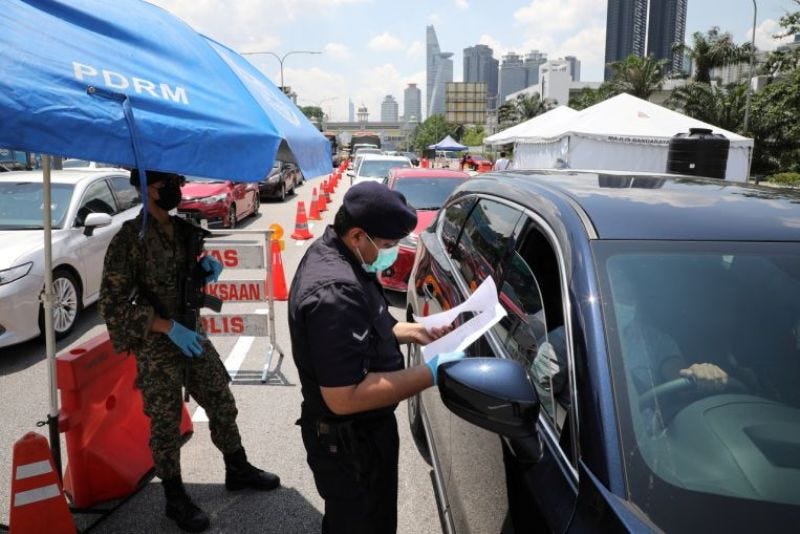By: Murray Hunter
Malaysia is now trapped in its third extended Movement Control Order, or EMCO, and is being ruled under emergency decree. The country is nearing a million total cases, with new ones running at a 15,000 daily clip and nearing 150 deaths a day. There is little sign that these metrics will decrease anytime soon. It is clear that the country needs to adopt a new strategy.
Malaysia has always been more susceptible to epidemics, with porous borders and an average population density of 99 people per square kilometer with densities in excess of 2,000 in urban areas. There are only 1.6 hospital beds available per 1,000 people 3.3 functioning ICU hospital beds per 100,000. In contrast, Italy, which last year ran out of ICU capacity due to a massive outbreak of severe cases, has 12.5 ICU beds per 100,000.
Malaysia has high incidences of diabetes, hypertension, obesity, heart and respiratory diseases, and cancers among the population, making members of the public extremely vulnerable to severe Covid-19 contraction. Another vulnerable demographic is those aged 65 years or above, who comprise 7 percent or 2.23 million people.
These factors have fuelled the potential for a disaster waiting to happen. The government and health authorities took no early preventative measures, or even attempted to educate the public about the dangers of the virus for the vulnerable. Gatherings which could potentially lead to superspreader events like the Sri Petaling Tabligh Jamaad, an international Islamic conference last year, were allowed to go forward even though the risks were well known. The Sri Petaling case became not just an epicenter for domestic cases, but regional ones as well…



